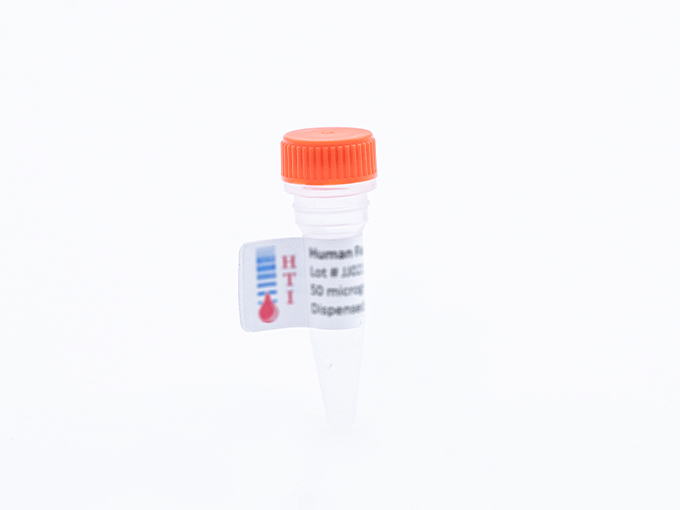Description
Alpha-thrombin is a highly specific serine protease generated by proteolytic activation of the zymogen prothrombin (1). During coagulation, thrombin cleaves fibrinogen to form fibrin, leading to the ultimate step in coagulation, the formation of a fibrin clot. Thrombin is also responsible for feedback activation of the procofactors factor V and factor VIII. Thrombin has also been reported to activate factor XIII and platelets, and also functions as a vasoconstrictor protein. The procoagulant activity of thrombin is arrested in two ways: 1) inhibition by either heparin cofactor II or the antithrombin III/heparin complex; or 2) complex formation with thrombomodulin. Formation of the thrombin/thrombomodulin complex results in the inability of thrombin to cleave fibrinogen and activate factors V and VIII, but increases the efficiency of thrombin for activation of the anticoagulant, protein C. Thrombin is a two chain enzyme composed of an NH2-terminal “A” chain (Mr = 6,000) and a COOH-terminal “B” chain (Mr = 31,000) which remain covalently associated through a single disulfide bond. Human thrombin is 13 amino acids shorter than the bovine thrombin due to a thrombin cleavage site on the human protein that is not present in the bovine protein. Thrombin is also utilized for site specific cleavage of fusion proteins expressed in bacteria (9-11). A thrombin sensitive site is incorporated between the recombinant protein of interest and peptides or proteins which facilitate purification and/or expression. The target protein is released from the expressed hybrid by cleavage with thrombin. Thrombin can then be easily removed by affinity chromatography. Human, bovine, and murine thrombin are prepared from purified prothrombin using a modification of the Lundblad procedure (1) as described by Nesheim et al. (2). Thrombin is supplied in 50% (vol/vol) glycerol/H2O and should be stored at -20°C. Purity is determined by SDS-PAGE analysis and activity is measured in a thrombin specific clotting assay, and compared to standardized NIH thrombin. Thrombin is also available with the active site blocked with either DFP, FPRck, or biotinlyated FPRck.
SUPPLIER:
Prolytix
STATUS:
In Stock
SIZE:
200 µg
-

